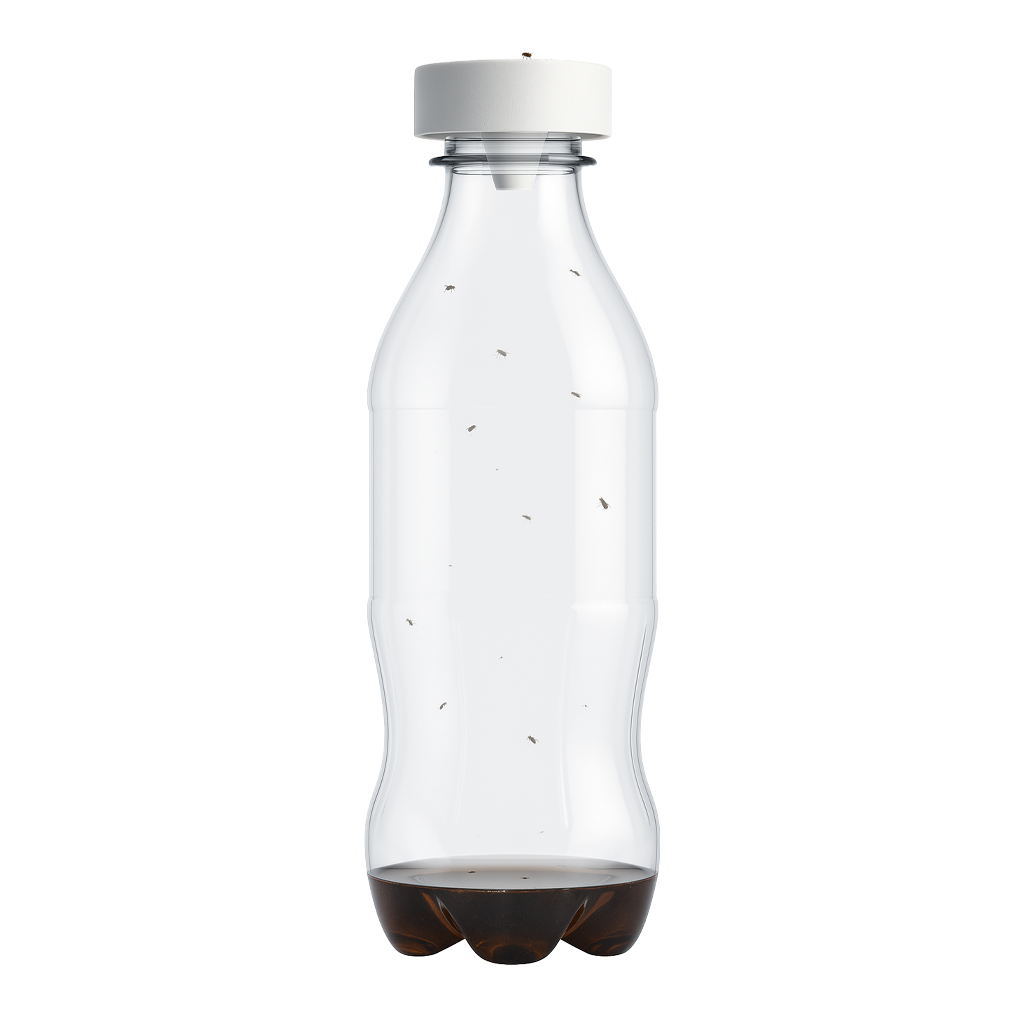Not every 3D printing project needs to be about high-tech gadgets or smart home accessories. Sometimes, it’s the simplest household annoyances that inspire the most clever solutions. This project is a perfect example: a 3D printed fruit fly trap that fits right on top of an empty soda bottle. It’s a technical solution for a non-technical problem – and it works brilliantly.

The Problem
Especially in the summer, fruit flies can quickly become a real nuisance. Leave a piece of fruit or an open bottle of juice on the counter, and suddenly your kitchen is buzzing with tiny visitors. There are dozens of DIY tricks to catch them – from vinegar in bowls to sticky tape – but I wanted something cleaner, easier, and reusable.
The Design
The idea was simple: create a 3D printable cap that screws directly onto a standard soda bottle. Inside the bottle, you add a bait mixture (apple cider vinegar works wonders). The design includes a narrow funnel opening, allowing the flies to enter easily but making it very hard for them to escape.
I designed the cap in Autodesk Fusion 360, then sliced it with Ultimaker Cura. Printing was done on my Ender 3 V2 using standard PLA. The print time is short, and the result is a small but very effective tool.
How It Works
- Print the cap.
- Screw it onto a plastic soda bottle.
- Pour some bait (vinegar, wine, or fruit juice) into the bottle.
- Place it near the problem area.
The fruit flies are naturally attracted to the bait, crawl into the funnel, and can’t find their way out again. Problem solved – without chemicals or messy setups.
A Clean and Reusable Solution
One of the best parts about this trap is that it’s reusable. When the bottle fills up, simply empty it, rinse it, and start again. No waste, no fuss, and no need for store-bought traps. It’s a simple piece of 3D printed plastic, but it transforms a common annoyance into something that’s easy to manage.
Download & Print
Want to get rid of fruit flies in your own kitchen?
You can download the 3D model for free and print it yourself.
* Free to use under the MIT license — attribution is required.
Conclusion
Not all 3D printed projects need to be flashy or complex. Sometimes, the best designs are the ones that solve the most ordinary problems in clever ways. This fruit fly trap is a great example: designed in Fusion 360, sliced in Cura, and printed on an Ender 3 V2. A small technical solution for a non-technicalproblem – and one that makes life just a little bit easier.